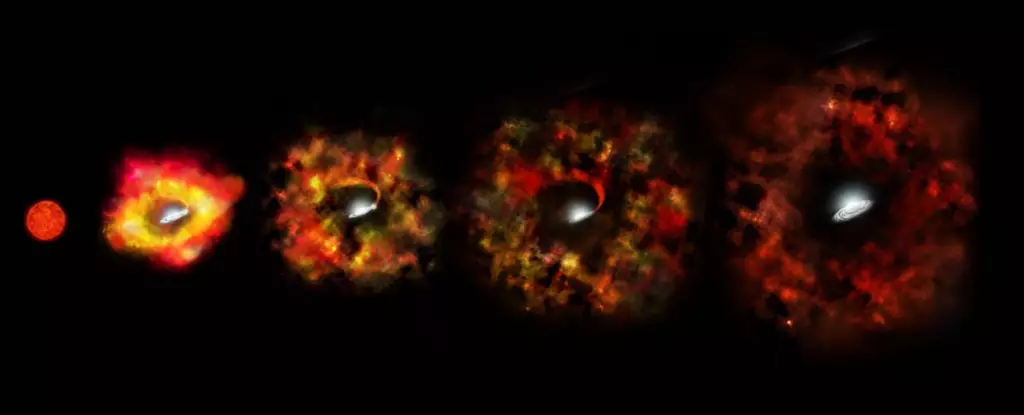In 2009, a perplexing event unfolded in the cosmos as a giant star, 25 times more massive than the Sun, seemed to vanish into the abyss. Known as N6946-BH1, this enigmatic star underwent a phase of intense brightening, increasing its luminosity to that of a million Suns. Astronomers anticipated an imminent explosion, a supernova spectacle. However, instead of a cataclysmic event, the star faded away without any astronomical evidence left behind. Scientists turned their gaze upon the star, employing powerful instruments such as the Large Binocular Telescope (LBT), Hubble, and the Spitzer space telescope, only to find nothing. N6946-BH1 had silently disappeared, leaving behind a myriad of uncertainties and intriguing possibilities.
Labelled as a failed supernova, N6946-BH1 had perplexed scientists for over a decade. The inclusion of “BH1” in its name suggested astronomers’ conjecture that the star collapsed into a black hole instead of igniting into a supernova. However, until recently, this theory remained purely speculative. All that was known for certain was that the star underwent a brief period of brightening before growing too dim to observe through telescopes. Nonetheless, a recent breakthrough has shed light on N6946-BH1’s mysterious fate, thanks to the revolutionary James Webb Space Telescope (JWST).
The James Webb Space Telescope, with its advanced capabilities, has provided astronomers with unprecedented insights into the enigma of N6946-BH1. A new study, published on the arXiv, meticulously analyzes the data gathered by the JWST’s NIRCam and MIRI instruments. Astonishingly, the analysis reveals the presence of a bright infrared source, reminiscent of a dust shell that encircles the original star’s location. This particular finding aligns with the possibility of material ejecta from the star during its dramatic brightening phase. Alternatively, this infrared glow could signify material cascading into the newly formed black hole, though this conjecture appears less plausible.
Moreover, the research team was astounded to discover not just one remnant object but three. Previously, the resolution of observations was too low to distinguish between these sources, resulting in a blending of data. This newfound revelation significantly diminishes the plausibility of the failed supernova model. Instead, it suggests a more probable scenario of a stellar merger causing the 2009 brightening. What initially appeared as a single bright, massive star could have been a star system that grew luminous during the merger and subsequently faded.
This startling revelation introduces a new layer of complexity into our understanding of supernovae and stellar-mass black holes. Previous observations from LIGO and other gravitational wave observatories have provided evidence of the existence and prevalence of stellar-mass black holes resulting from mergers. Thus, it is established that certain massive stars do indeed transform into black holes. However, the question of whether these stars undergo supernovae before collapsing into black holes remains unanswered. While regular supernovae can yield enough remnant mass to form a black hole, it remains challenging to envision the formation of the most massive stellar black holes solely through supernova events.
The galaxy housing N6946-BH1 lies a staggering 22 million light-years away, underlining the exceptional capabilities of the JWST in distinguishing between multiple sources. Astronomers now have a renewed sense of hope that similar stars will be observed in due course, diversifying our dataset. With an ever-increasing pool of data, scientists can aspire to differentiate between stellar mergers and true failed supernovae. Such a distinction would undoubtedly contribute to our comprehension of the final stages of stellar evolution as stars traverse towards becoming stellar-mass black holes.
In the grand cosmic theater, N6946-BH1 takes center stage as an astronomical marvel, challenging our preconceived notions of stellar fate. The artistry of disappearing without a trace, leaving behind only remnants, captivates the scientific community. With the unveiling of the hidden secrets through the James Webb Space Telescope, our understanding of stellar evolution and the enigmatic boundaries of failed supernovae and stellar-mass black holes becomes more intricate and profound. As N6946-BH1 whispers its cosmic tale from 22 million light-years away, we await with bated breath for further revelations from the depths of the universe.


Leave a Reply